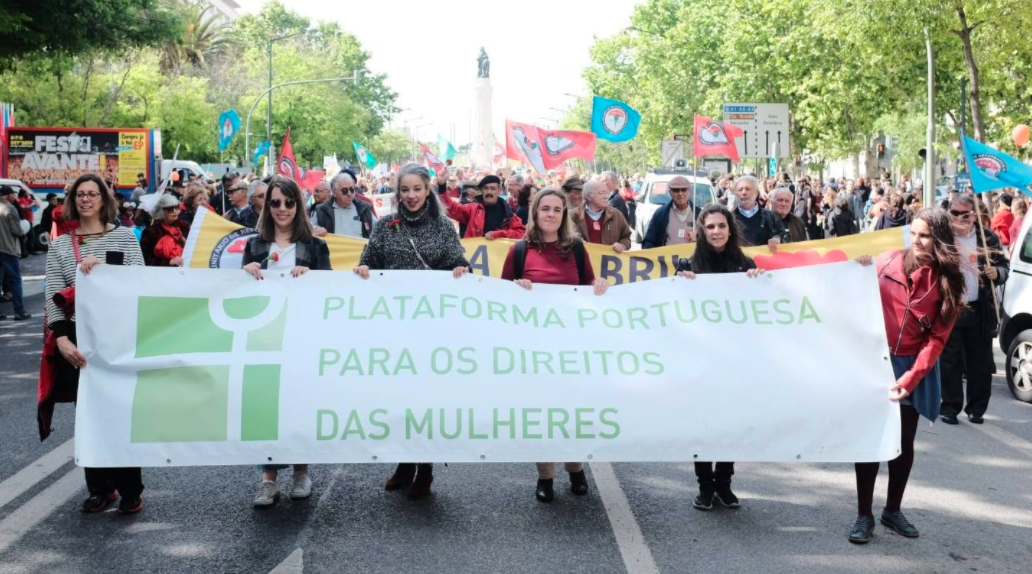Gender Budgeting in the City of Vienna 01
An interview with Michaela Schatz
In 2019, the European Women’s Lobby (EWL) launched the Channelling Resources into women’s Rights in Europe, a two-pronged project that seeks to mobilise long term resources for women’s rights in Europe.
As part of this project, the EWL has been engaging in capacity building and awareness raising activities on the importance of gender budgeting in achieving equality between women and men. Gender budgeting recognises that budgets impact on women’s girls’, boys’ and men’s lives differently and that women face specific obstacles resulting from the historical, traditional and stereotypical distribution of power and labour. Effective implementation of gender budgeting across EU and national budgets would ensure gender mainstreaming commitments remain as a political priority and progress equality in Europe.
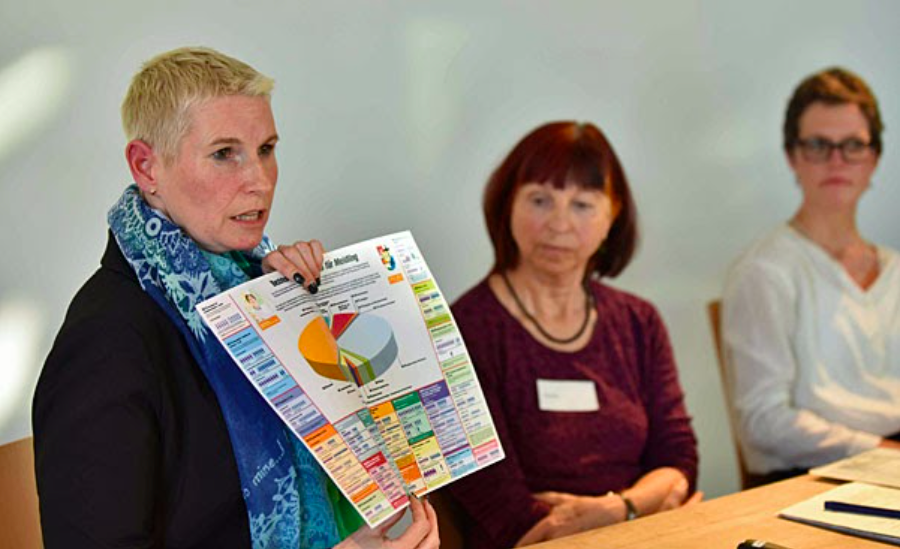
Since 2005, the authorities of Vienna have been investing in the implementation of gender budgeting across the annual city budget. As one of the few European cities leading the way on gender budgeting, EWL took the opportunity to interview the experts and find out more. Michaela Schatz, Head of the Department of Gender Budgeting in finance of the City of Vienna sat down with EWL to share her expertise and advice on gender budgeting.
Thank you for meeting with us Michaela, would you be able to tell us more about your role and more about how gender budgeting works practically in Vienna?
Today we are in the finance department of the city of Vienna and my task is to create and implement the overall budget and in addition I manage the Gender Budgeting Unit. Vienna has had a commitment to gender mainstreaming since 2000 and gender budgeting since 2006, we have it clearly in our Constitution.
We oversee a budget of €16 billion across the many departments for the city; we have 23 districts in Vienna and each of them do their own budgeting, 12th District Meidling also do gender budgeting for their own budget. An example, the public data from 12th District shows how many women and men are using public transportation services and infrastructure. The data they collected showed that, women are more using public transportation and pedestrian ways and men driving more by cars and bicycles, so this was considered in a €6 million project for the redevelopment of one of the main streets in Vienna recently.
It is my responsibility here at the department to make sure there we have an annual gender budgeting report included in our city budget. The report is a result of several individual reports, which I receive from all our departments. Each department had to create its own part of the gender budgeting report and I then put this all together into one big overall report. Practically, we started with the first budget of 2006 and since then all departments have to prove their services’ commitment to gender equality. They have to define annual objectives and the measures they will take to achieve these objectives, which are monitored by a report to determine if these objectives have been achieved. As coordinator, they have to tell me exactly how they will reach their objectives, and they have to prove that gender equality is being reached; if not they must search for more effective measures.

Could you tell us more about how you communicate to the general public about your work on gender budgeting?
We do make some public campaigns to show not only gender budgeting but also gender mainstreaming. For example, we ran a public campaign by changing the design of signs on city streets or on buses. The pictograms used in our trams always show a single man, a mother with a child so we changed them to a single woman and a father with a child and shared this campaign across the media, though the response was not always positive. We also develop campaigns for our staff, because it is important to take these actions (awareness raising) internally too to remind staff why they are doing this (gender budgeting measures) on a regular basis.
Have you experienced any challenges in the implementation of either gender mainstreaming or gender budgeting?
I would say the most important and also the most difficult point was to convince staff of this new topic. The initial problem was that it required more work than before (to implement gender budgeting) but we had the same number of people, we didn’t receive more capacity. So, at the start, awareness raising was the most important point for staff. Another challenge was to raise the level of appropriate data; we have a lot of data from all over the city and each department differed in the quality of data. Some of the data we had was gender segregated but a big part of it was not, so the highest priority was to improve the quality of the data.
One other big challenge was building the guidelines and to bring the topic to the staff. We started doing training for the department leaders as those responsible, but we also made training for the staff who have to define the objectives, measures and who are doing the ground level work. In these full day training, we explain the main reasons for the commitment to gender mainstreaming and gender budgeting, doing tests and role plays to engage the staff. We are also always available to help departments who are having trouble defining indicators or measures for the annual report. We have a very big network here in Vienna on gender budgeting and gender mainstreaming, and we are meeting three times per year to exchange views and hold meetings with multipliers.
So in your experience, what advice or lessons learned would you give to stakeholders for implementing gender budgeting and do you think it has been a transformative process for Vienna?
The top priority should be the approval and enforcement of gender budgeting by the political decision makers because it is a top-down principle- when the political level doesn’t commit to this then you will not be able to start, as you won’t have the needed political will. This must go down to the leaders of governmental departments and their staff which can be done through networking and using multipliers to make (gender budgeting) a public topic. Training on the topic is irresistible for those who need to implement gender budgeting and concrete guidelines are always helpful.
Yes, we have had a transformative process in the last 12 years or more. The topic of gender equality now plays an automatic role in all the topics of the city, we have gender equality checklists from City Planning to all other sections with lots of subsidies attached, so gender equality is an important issue for Vienna, it happened slowly but continuously. We have been successful and because of this we have had a lot of international delegations come to visit us to hear more about gender mainstreaming and gender budgeting. This year, we have spoken with delegations at the European Parliament, Germany and even Mongolia and Georgia.
My final piece of advice would be that you must start with data, when you don’t have the right data, you can’t map the status of gender equality in your region and you won’t know where to start- you must know the status quo and then you can work to build the right measures and objectives to make things better. If you don’t have a quality data source ready, then you have to begin by collecting it and only start developing measures when you have a good data set, so understanding that you will need time.
The EWL would like to thank Michaela Schatz and the Gender Budgeting Unit for the City of Vienna for their time and expertise.
Find out more about gender budgeting and about our latest event with European Parliament decision makers on how to strengthen gender mainstreaming in the EU budgeting process here.
Gender budgeting as a tool to combat domestic violence in the UK
Building the case with the UK Women’s Budget Group
What is the practical value of gender responsive budgeting? Sometimes we can use gender responsive budgeting as a way in, to build a persuasive case for investment or spending in a particular area of public policy.
One example of this is by calculating the costs of violence against women and girls. This has been done in a number of countries: and it builds a case for investment by governments in prevention work and better services and support for women and girls, by making the economic case for this investment – through calculating the true cost of violence. Time and again we have found that the argument for women’s rights is more powerful and persuasive when it is based on the economic case for investment rather than the moral case. If governments see that they can save money in the long term by spending money on prevention, they are more likely to make the necessary budget allocation.

This case study explains how it was done in one country (the United Kingdom) and how costings work originally undertaken by civil society organisations began the costings process and how the government finally took over this work, establishing a reliable database covering all the costs of violence – such as hospital stays, accident and emergency, loss of wages, criminal justice costs – and using government’s own costings methodology to calculate the cost to the state, the community, and to individual women themselves.
Take more advocacy advice from the expert in women’s rights: Janet Veitch.
Providing technical assistance and launching pilot projects in Portugal
The Portuguese Platform for Women’s Rights (PpDM), as an umbrella organisation, contributes to the empowerment, articulation and mobilisation of Portuguese Women’s Rights NGOs and to the reinforcement of its networking and cooperation relations with European, Mediterranean and International NGOs working in this field, in order to strengthen and support these NGOs’ important social role as actors in the process of implementation of gender equality.
Back in 2015 the Portuguese Platform for Women’s Rights submitted its shadow report to CEDAW drawing attention to the financial crisis that hit Portugal which, coupled with the austerity policies in place since 2011, had created an economic and social crisis undermining women’s economic and social human rights, perpetuating and exacerbating existing gender inequalities, and creating new ones. That same year we sent 3 delegates to CEDAW and one of the main recommendations from the women’s NGOs was incorporating gender budgeting in the national Budget.
As a result the CEDAW Committee reminded the State party that, even in times of fiscal constraints and economic crisis, special efforts must be made to respect women’s human rights, sustain and expand social investment and social protection and employ a gender-sensitive approach, giving priority to women in vulnerable situations.
The concluding observations were translated by the Portuguese Platform for Women’s Rights and a hearing took place in the Parliament. These observations were also sent to the newly elected Portuguese Government. Furthermore, we’ve done work with the media, raising awareness to the disastrous underfunding of women’s organisations in Portugal and its umbrella organisation, the Portuguese Platform for Women’s Rights. As a follow-up, the Portuguese Platform for Women’s Rights received, for the first in its history, a State subvention, funded by social gambling.
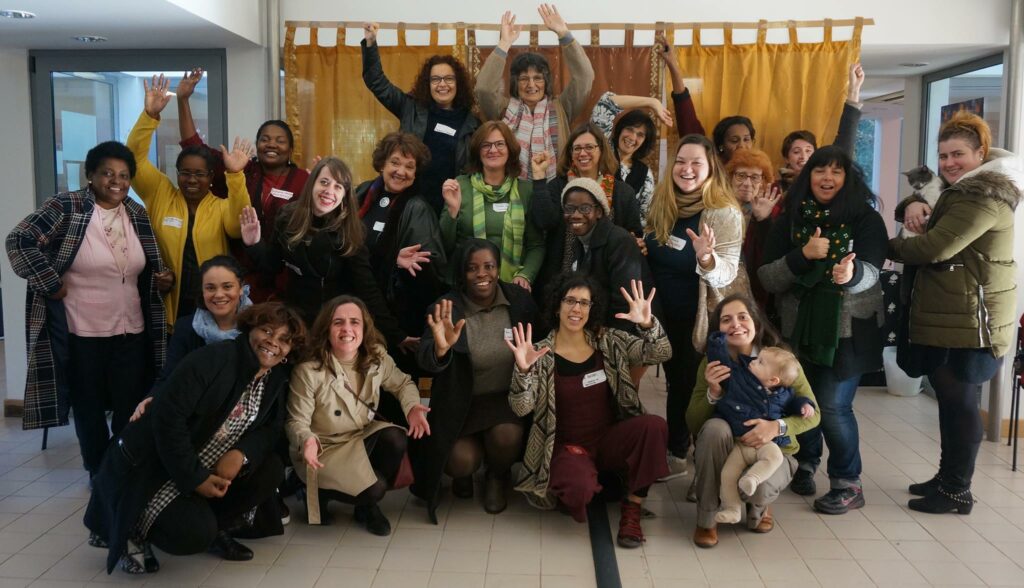
The Portuguese Platform for Women’s Rights was also requested to provide technical assistance in implementing a pilot project on gender budgeting in the State Budget.
In this context, gender budgeting was first introduced in the Budget Law of 2018 which stipulated that government departments had to prepare a report analysing the gender impact of their sectoral policies in order to pave the way for gender budgeting in the State Budget.
This was in line with policy indicators inscribed in the newly adopted National Strategy for Equality and NonDiscrimination 2018-2030 Action Plan on equality between women and men, to which the Portuguese Platform for Women’s Rights had been consulted and provided input.
This process was politically led by the Secretary of State for Citizenship and Equality and the Secretary of State of Finances in close cooperation with the Portuguese Platform for Women’s Rights, the Commission for Citizenship and Gender Equality and the Directorate-General of Budge.

The pilot project enrolled seven Ministries – Presidency and Administrative Modernization; Finance; Internal Administration; Justice; Education; Work, Solidarity and Social Security; Health -, each of which selected a limited set of policy measures or actions to be submitted to gender impact assessment. An international workshop was organised with the goal of fostering learning from other countries’ experiences.
The pilot project ended with a global report in 5 chapters:
1. Accomplishments – the legal, institutional and procedural initiatives undertaken;
2. Reality – updated analysis of the situation of women and men in the policy areas covered by the pilot project;
3. Representation – participation of men and women in decision-making positions;
4. Resources and results – policy measures analysed in the pilot project, in relation to equality between women and men, including objectives and budgeted amounts;
5. Recommendations – measures and procedures required to ensure a progressive, sustained and consistent development of gender budgeting in Portugal.
A methodological guide including a tool for gender budgeting was developed by the Portuguese Platform for Women’s Rights through a participatory process with the public administration officers (and in some cases cabinet advisers) appointed by the Ministries. The Portuguese Platform for Women’s Rights designed and delivered a 21-hour training module to 23 civil servants. And, afterwards, at the INA – General Directorate for qualification of workers in public functions.
The pilot-project was intended to serve as a basis for a progressive implementation of gender budgeting.
Since 2019, State Budget Laws state that the budgets of public services and agencies should incorporate the gender perspective, by identifying the programmes, activities, or measures to be submitted to gender impact analysis, but no significant progress was made.
The Portuguese Platform for Women’s Rights did work with the media raising awareness, as well as with the Parliament, and produced over time a number of positions. The Portuguese Platform for Women’s Rights in its capacity as a Counsellor at the Economic and Social Council has also been engaged every year in preparing opinions on the State Budget.
As a result, the State Budget proposal for 2021 identifies, for the first time, 8 objectives, 25 indicators and 19 concrete measures / actions in the context of the strategic challenges the State Budget aims to respond to related with climate change, the demographic challenge, the construction of a digital society and the reduction of inequalities.
“Use UN, EU and national women’s human rights norms and standards to put pressure. Create knowledge on gender budgeting based on the women’s experiences and have accessible information materials on gender budgeting, raising awareness about it at large Integrate bodies of consultation / influence, where you have access to information and a voice in the formulation of opinions.”
–Portuguese Platform for Women
Establishing the Equality & Budget Advisory Group in Scotland
Engender is Scotland’s feminist membership organisation. We have a vision for a Scotland in which women and men have equal opportunities in life, equal access to resources and power, and are equally safe and secure from harm. We are a membership organisation working on an anti-sexist agenda in Scotland and Europe to increase women’s power and influence and make visible the impact of sexism on women, men and society.
Since devolution in 1999, Scotland has made some progress towards gender-responsive budgeting, primarily in the form of the Equality and Budget Advisory Group and Equality Budget Statement (EBS), which is now the Equality and Fairer Scotland Statement.
Published in parallel to the Draft Budget, the EBFS assesses the Ministerial Portfolios’ proposed spending plans for their impact on equality and socioeconomic inequality. It is currently the only process of its kind in the UK.
However, at present, the EBFS is a list of gender and equalities-inflected spend, describing spending decisions that have already been made. It has limited impact on the budget process itself.
The EBFS requires a clearer purpose and better timing to substantively inform development of the Scottish Draft Budget, and to be used more effectively by members of the Scottish Parliament and parliamentary committees in their budget scrutiny.
Scottish Women’s Budget Group was founded almost at the same time as the Scottish Parliament, during the period from 1999 to 2000. Originally called ‘Engender Women’s Budget Group’ after the feminist policy advocacy organisation from which it emerged, it brought women activists, academics, and practitioners together who were active gender advocates.

The Scottish Women’s Budget Group used the opportunity of the development of new institutions and processes post-devolution, along with a closely networked small polity, to advocate for gender budget analysis.
As Angela O’Hagan has set out in her definitive work on gender budget analysis in Scotland, it embarked on a sustained programme of advocacy to inform and persuade parliamentarians, Scottish Government officials, and finance ministers.
“Gender budgeting is about making sure that public money is spent on the whole population, not just a few people, and that it actively promotes equality”
Through developing seminars on gender budgeting approaches with senior government officials working in finance, lobbying for pilot studies of gender budgeting within specific policy areas, and deft deployment of gender budgeting advocates as advisors to parliamentary committees providing budget scrutiny, it made the case for gendered analysis within budget processes.
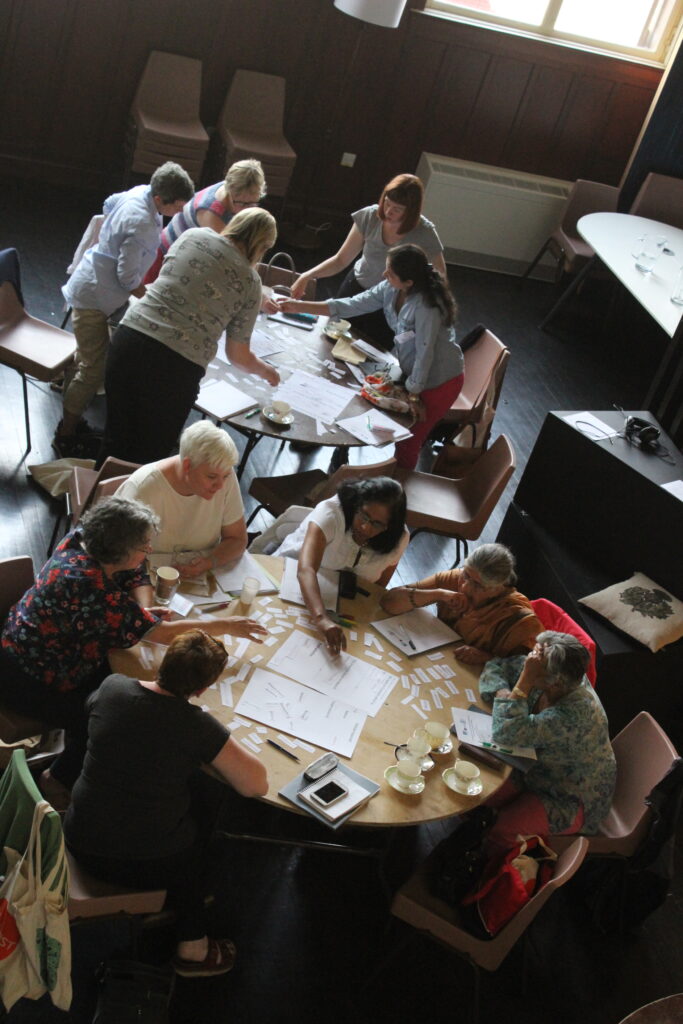
Pilots included analysing the spend on programmes targeted at smoking cessation and sport. The Scottish Women’s Budget Group secured a significant campaigning aim when Scottish Government published the Equality Statement on the Draft Budget 2010-2011 in 2009.
Since 2009, the Scottish Women’s Budget Group has advocated for development of the equality budgets statement process into gender budget analysis.
The Equality Budgets Advisory Group, which was created in proto form in 2000, has also contributed to this work. Scottish Women’s Budget Group has always been a member of this group but gender budgeting expert Angela O’Hagan is now its independent chair.
This reflects the approach that the Scottish Women’s Budget Group has long taken, in applying pressure from outside the Scottish Government while maximising the space for action inside the government.
It has been challenging to make the case for a transition from a much lauded but flawed equality budget statement to an intersectional gender budget analysis. It has been difficult to advocate for a process focused on women and gender within a wider policy context that emphasises a broader, fuzzier ‘equalities mainstreaming’ approach that also includes socioeconomic inequality.
Monitoring the state budget in Sweeden
The Swedish Women’s Lobby was founded in 1997 and has been promoting gender budgeting ever since. We build our advocacy work for gender budgeting on the undertakings made by Sweden and other countries in the Beijing Declaration for Action and the Treaty of Amsterdam. Their aim is to integrate women’s perspectives into all political, economic and social processes, locally as well as internationally.
In 2005, after pressure from feminist politicians and the women’s movement, the Swedish parliament adopted a progressive gender equality bill that included strong commitments to gender mainstreaming and gender budgeting. From that moment and on, the Swedish Women’s Lobby has tried to monitor the implementation and outcome of gender budgeting.
Every year we conduct a gender equality review of the state budget bill. The reviews have different themes each year, for example we have studied austerity measures, income tax deductions and investments in birth- and pregnancy care. Irrespective of the theme, we will always come back to three questions:
1. Is gender equality mainstreamed throughout the budget?
2. Will the proposed investments benefit women and men equally?
3. Will the budget, in total, lead to greater gender equality?
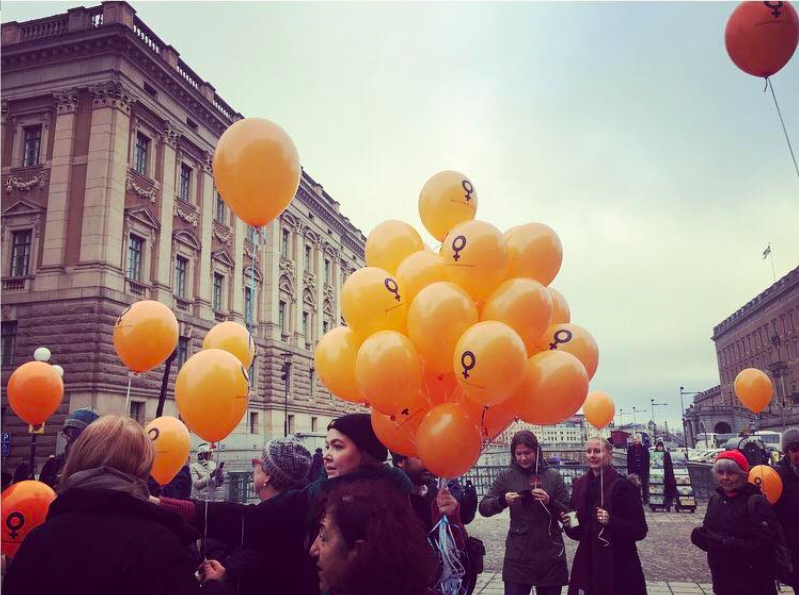
We use different methods in our reviews, but we usually start of by searching for key words like wom, girl and gender equal* in the budget. The number and distribution of hits will be an indication of the level of mainstreaming, many hits that are evenly spread out suggests that the budget is gender mainstreamed and vice versa. Next, we analyse when, where, and how women and gender equality is addressed in the budget. We want to find out if differences in the distribution and outcomes of investments are shown, properly analysed and countered with sufficient actions.
The results from our reviews are summarized in brief online comments, or, when we have enough resources, in written reports. If we have managed to put together a written report, we will organize an event to which we will invite the minister of finance to comment on our findings. We also try to get as much media coverage as possible, most years we will be invited to comment on the budget bill oin national television.
The secret behind getting media coverage, at least for us, has been to follow the ordinary news cycle. In the days ahead of the release of the state budget all news outlets are reporting on economic and budgetary issues, which makes it the perfect time to reach out to media contacts and ask if they want to know more about the women’s movements and economic policy proposals.



